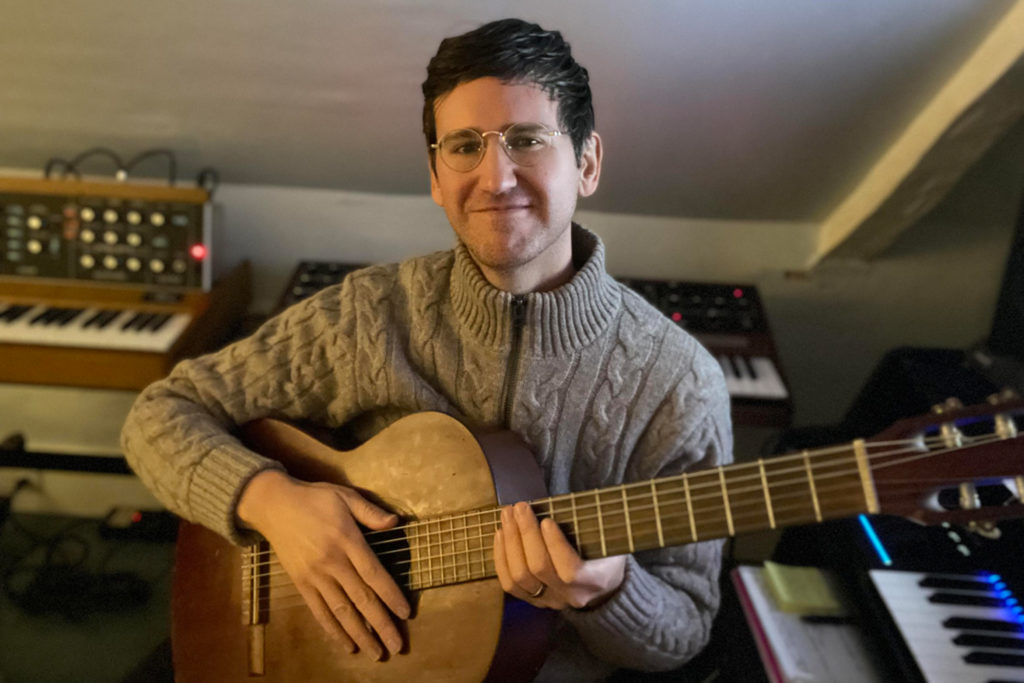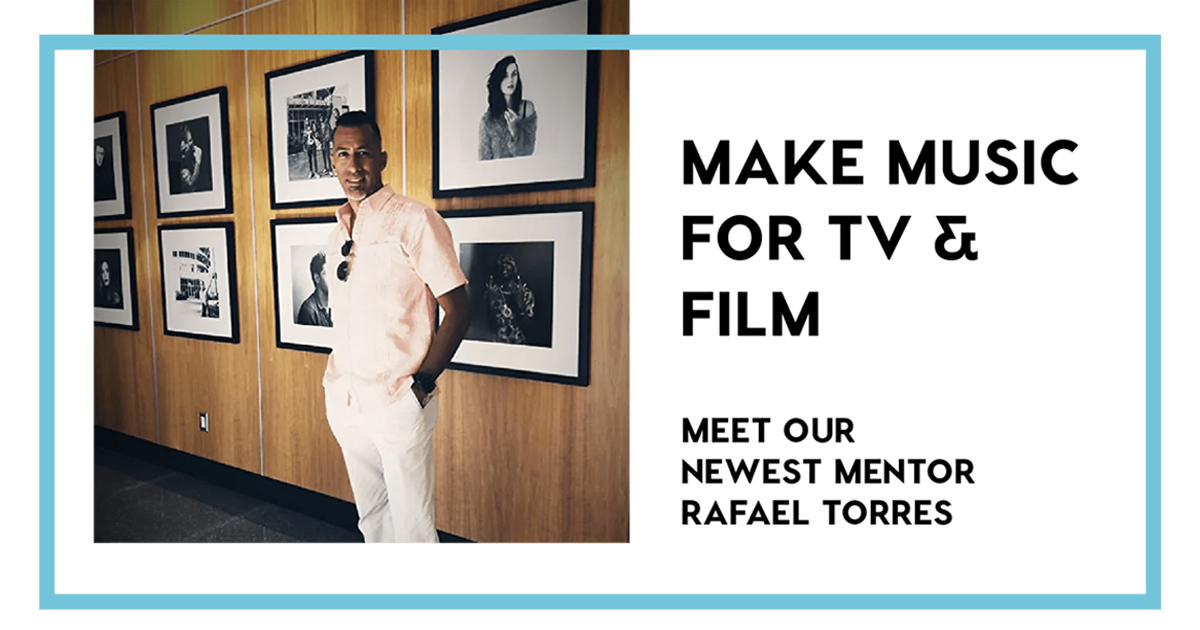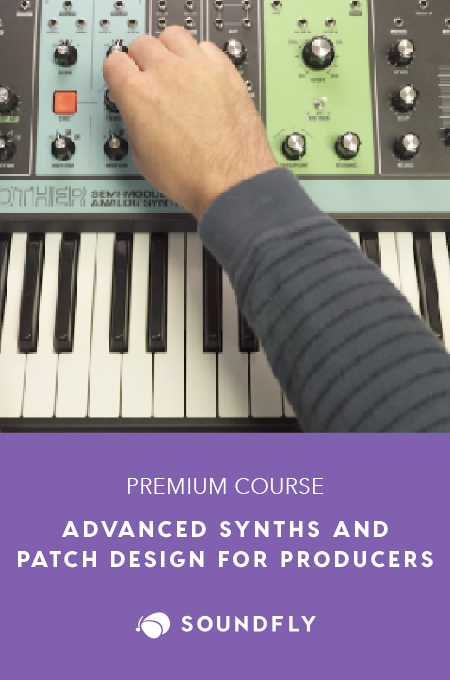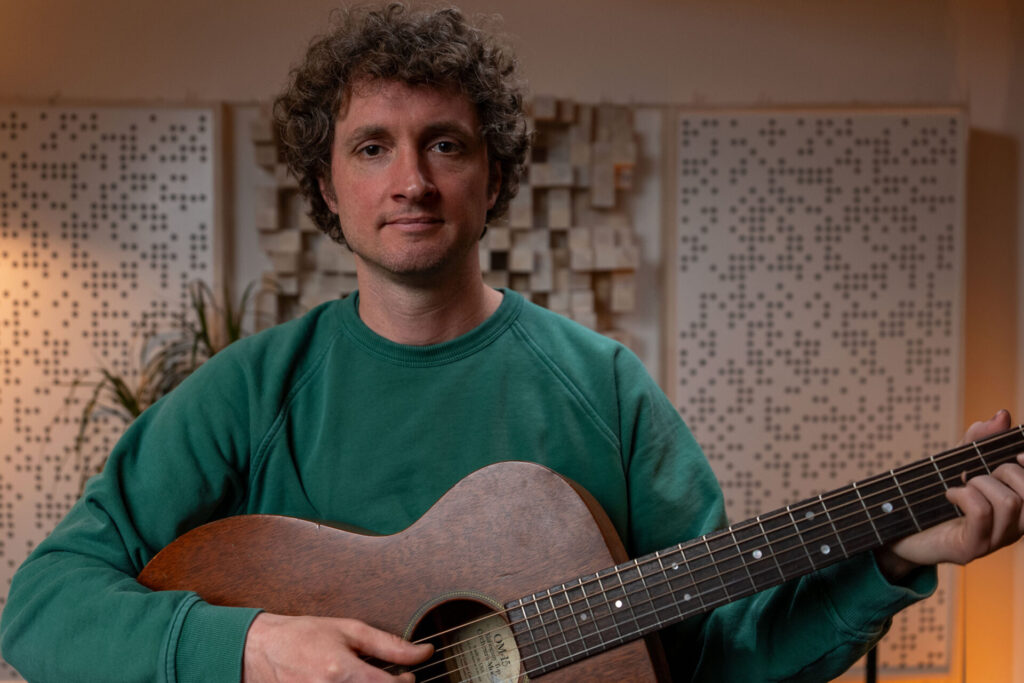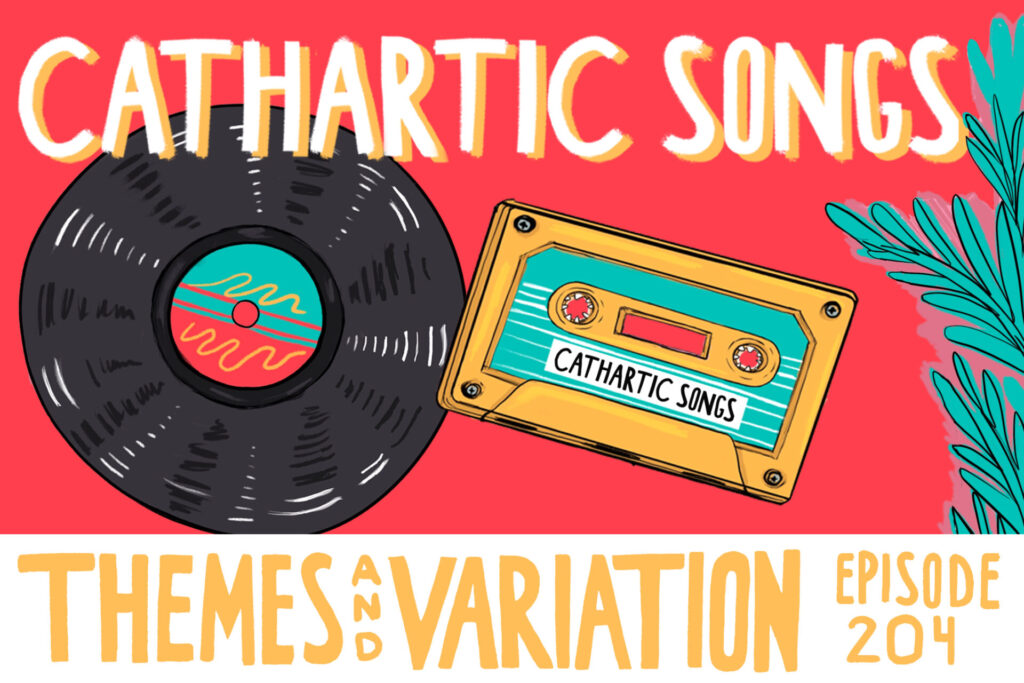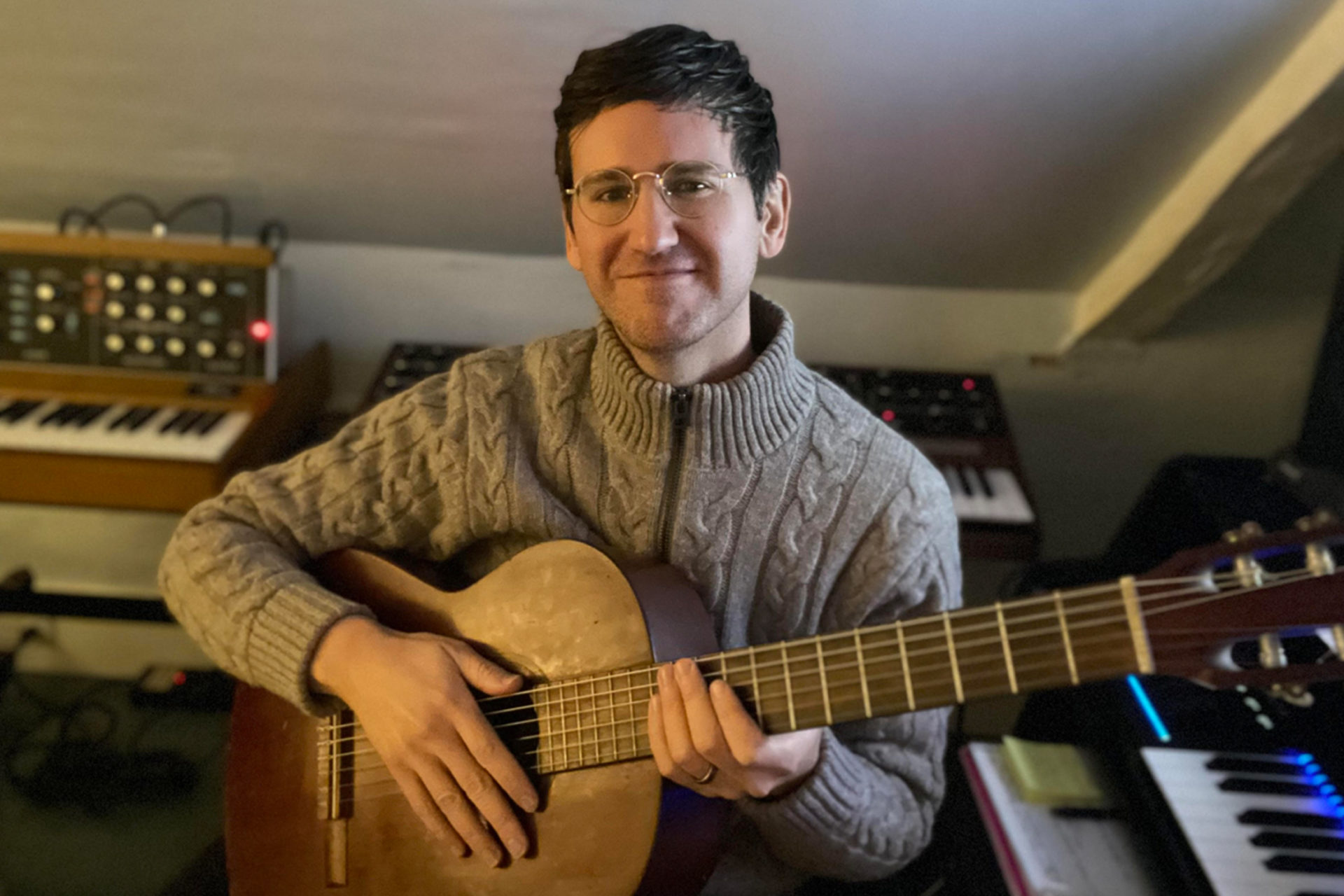
Nick Shopa is a multi-hyphenate musician, producer, composer whose quality of work and arranging wherewithal have somehow vastly surpassed the experience he’s had to put into them. In other words, for an artist you’ve likely never heard of, his music is really freaking good.
Just watch this scoring contest submission of his for a scene from DC’s Stargirl by Spitfire Audio. You could put this on TV tomorrow!
And until asking Nick about the details of his media sync process — how sometimes he has to resist the urges of key fluidity and to end up where he starts harmonically, how he unfurls variations on a theme through different techniques, and how things like percussion can distract from dialogue — I didn’t realize how fundamentally talented he was. But I did know how he ended up here.
Nick’s musical upbringing wasn’t so unusual — playing in bands, writing solo music from time-to-time — but when he started getting really interested in media syncs and scoring for TV, film, podcasts, he simply didn’t know where to turn after exhausting some personal connections. So he got set up with Soundfly Mentor Rafael Torres to make sure he continued to move towards that goal and to work on speeding up his output while maintaining a high-quality result consistently.
Read on to learn more about Nick Shopa’s artistic journey.
Q: You’ve recently been contributing to a few scoring competitions, where you’ve composed and produced tracks for media sync placements. Congrats! What I’ve heard has been lush, evocative, and flowing with motivic and narrative ideas. How has this submission process opened you up to the industry at large?
A: Thanks, I’m glad you enjoyed them. I feel like doing these scoring competitions is an approachable way of dipping my feet into the industry, so this is really my starting point. I’ve yet to do any sort of “hard launch” for myself, no paid promotion campaign or onslaught of social media blasts. Maybe that’s to come. Instead I’ve been softly rolling out material at a calmer pace as I finish a pair of albums designed for media sync placements, set for an April release.
For now, it’s an Instagram post here, a YouTube video there, but nothing more aggressive. So naturally there haven’t been many “connections” made so far, but I trust this will change as I pester and flood production companies and make the right promotional choices in the coming months.
I wanted to start with the DC Stargirl Scoring Competition track first, it’s fun and super epic. How did you approach the score from a process standpoint?
This piece is a very standard score-sounding moment for an action scene set in a superhero drama. I wanted it to sound like something you’d expect to hear in a scene like this, something that belongs, so I didn’t fight any obvious instincts that arose. To put myself in the right mindset I just asked myself “If I were watching this from the couch, what would a typical score sound like here? What should it sound like?” and then I just kind of… did that? I don’t know, it was an intuition thing, and very much a “don’t overthink this” thing. I didn’t try to reinvent any wheels here.
For this entry, I wanted to prove that I could cover the basics: orchestration, arrangement, hectic string runs, corny horn blasts, etc, but I also wanted to add a twist of modern production and effects. The first thing I tackled was the theme for when S.T.R.I.P.E, the robot character, enters. That’s what I spent the most time with, which is funny because it’s the most basic thing in the score, harmonically speaking. It was a “save the day” kind of moment on screen so I needed something heroic to match, but with a touch of bad-assery; something that would rally the troops.
Once I had that theme in place, I was able to fill in everything else rather quickly.
“The importance of notating a key signature is out the window. Where you start isn’t always where you finish.”
There’s so much happening here harmonically and sonically. I understand you didn’t need to provide the sound effects but there are synths here complimenting the strings and orchestral percussion, it flows so well. Can you talk a bit about the music on the page, and what the melodies and harmonies are doing?
Thanks! As I’ve found with most cues I’ve scored, the importance of notating a key signature is out the window. Where you start isn’t always where you finish, and almost immediately it takes twists and turns into territory I honestly don’t even know or care how to notate. I compose in Logic Pro X, so everything unfolds right there in front of me, synced to picture.
I don’t map things out on staff paper first, if that’s what you’re asking. If it’s ever necessary I can always plot it out then print it via Sibelius but at this stage I’m not using a live orchestra, though hopefully some day. As this particular piece goes, we open with a C harmonic minor string run that’s quickly followed by brass stabs on an E-flat 5 chord, a tritone on E, then a cartoonish synth simulation of S.T.R.I.P.E, the robot, as he makes his entrance. We remain in atonal tension until S.T.R.I.P.E springs into action and his heroic theme begins, detailed above.
Here we finally establish a key signature (B♭) and a discernible meter (4/4). Of course this has to immediately change though, as the scene dictates. We’re followed by a moment of awe as Stargirl works her magic wand, and a mystical choir emerges (F# major).
These vocals provide a melodic anchor while a brass ensemble jumps from key to key and lands with an exhale back on F# major, just as the crisis on screen lightens. But the resolve is short lived as tension in the storyline returns, and our lovely F# major is soured by a flat-5th and major 7th, which colors the remainder of the piece in an unsettling atmosphere of churning dissonance culminating in a crescendoed shriek.
As for your other score piece, “A Glimpse of Earth and Space,” I feel like there’s a lot going on here. It looks and sounds like you wrote a melodic motif and then began varying it and customizing the textures and transitions for these different scenes. If anything it’s an extremely succinct exploration of contrast in orchestration. Can you talk about this one a bit?
Unlike the DC Stargirl cue, “Earth and Space” lent itself to more easily discernible key signatures. The verses toggle between E♭m7/F# and B♭sus4/F, then pivot to A♭m and Fsus4, with the second pass resolving on F, pointing us naturally to C major for the main theme.
Yes, you’re correct — the song states a theme, develops it, then returns with a recapitulation, to put it in more pretentious, classical terms. I kind of followed a loose sonata form or even a pop format with this one. You can think of it as verse, chorus, chorus, verse, bridge, chorus. The “chorus/main theme” is introduced with a solo cello composed with the CineSamples library CineStrings Solo (this was, after all, a #cinesamples contest).
As per the rules, the song couldn’t exceed 1 minute and 45 seconds, which was my biggest hurdle. I had to rush every ritardando and cut out a double-theme coda to make it all fit. I tried my best to carve out enough space for the piece to breathe, but I could have really used an extra 30 seconds, I won’t lie. The visuals on screen jump back and forth between sunny earth and cold outer space, and my themes try to capture that energy.
“To work as a musician in media, you must move quickly, and to do that you’ve got to be organized, commit to your decisions, and keep things moving.”
I’m not sure which of these two you worked on during your Soundfly mentoring session with composer and producer, Rafael Torres, but how did his advice and tutorials help you prepare for these submissions?
Actually neither of these submissions were part of my session with Rafael, but his advice definitely prepared me for both of them. Mainly my biggest takeaway was this: learn to work fast. To work as a musician in media, you must move quickly, and to do that you’ve got to be organized, commit to your decisions, and keep things moving. I did all of that and more for these submissions.
What kinds of things did you address and uncover during your time together with Rafael? And what were you originally intending to get from the session?
I had no preconceived notions or specific expectations, I really came into it open and ready to learn. The first thing Rafael had me do was score a three and a half minute cue to see how I worked and to basically understand what my skill level was. There were fundamental things I didn’t yet know about scoring to picture which Raf honed in on right away.
For instance, I didn’t know not to have drums or busy percussion playing while there was dialogue happening. Also some of my transitions were clunky and needed finessing.
Another thing I learned to do is allow for space; to resist the urge to over-compose. As oxymoronic as it might sound, not every moment in a score needs music.
+ Learn about Soundfly’s goal-oriented custom mentorship program here, and fill out a quick form if you’d like to get paired with a mentor to improve your skills!
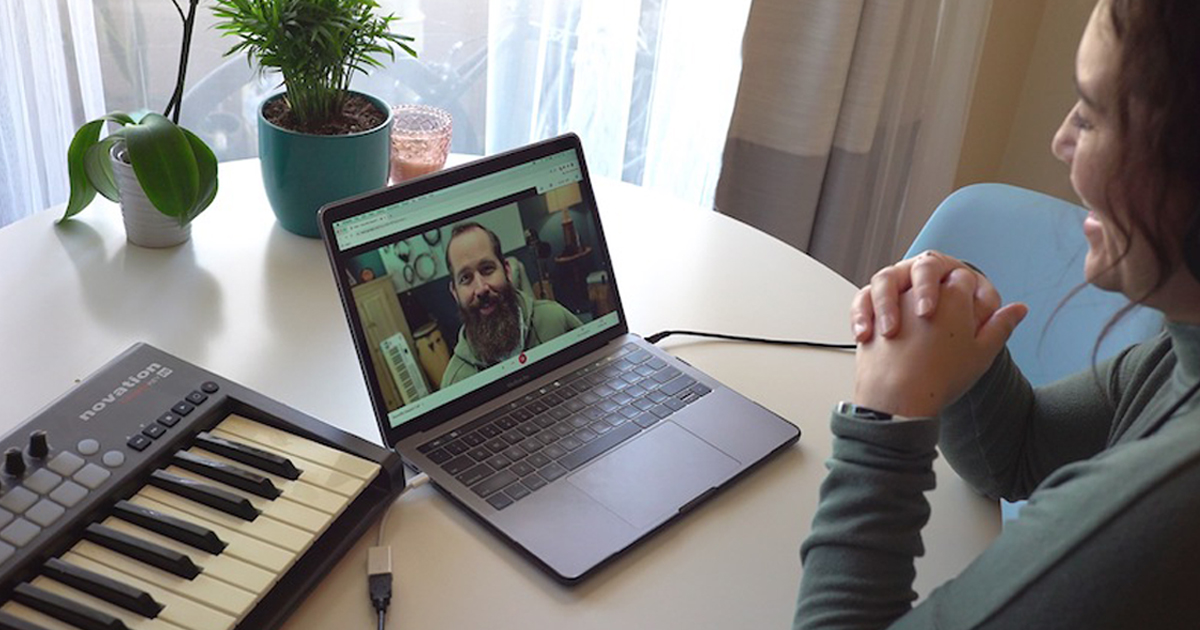
Has your composing or production process changed or adjusted as a result of working with Rafael Torres?
My organization of how I approach a session has changed completely. I’ve learned to do things like conceptualize practical steps before getting started. Making decisions like what hardware instruments I will use, what VSTs, which effects, what BPM, time signature, key, and how long the song will be — all of this gets written down and decided before I even open up Logic.
Creating session templates in Logic is another big one. I’ve also learned to make fuller use of the stereo field, Raf was big on that. Having all of these things figured out ahead of time is just one little trick I’ve learned to move as quickly as I can.
And what initially brought you over to Soundfly?
I wanted to break into the commercial music industry but didn’t know where to look. Who do I reach out to and what do I do to prepare? What should I expect and how should I manage those expectations? After playing in bands for so many years I got used to bouncing ideas off other collaborators and working in teams, figuring things out together, etc. But over the pandemic, I found myself on my own and in need of guidance, someone who could explicitly tell me what’s up. Rafael really helped with that.
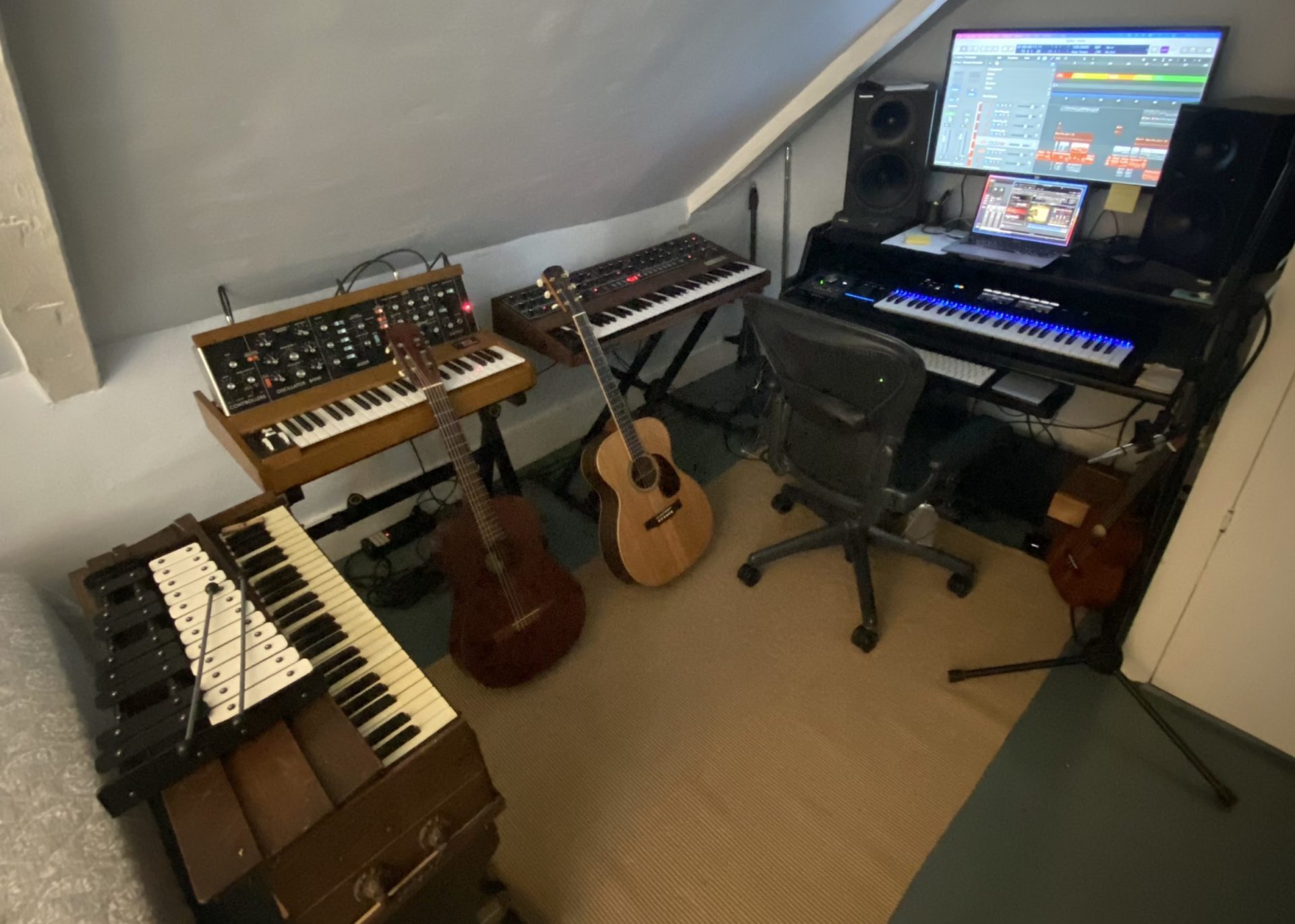
Who are your biggest influences and what are you listening to now?
It probably all goes back to The Beatles for me. Somewhere floating around in my subconscious there is Beethoven, Chopin, and Mozart cemented into my DNA from hearing my mom practice them every day. All of them show up in my writing in both deliberate and unintentional ways. What I’m listening to at the moment is Howard Blake’s score to The Snowman, which I’m obsessed with.
What’s next for you in 2022?
In April, I will have finished two albums of instrumental music suited for media which I will be pitching relentlessly to music publishing companies, filmmakers, and all the industry contacts established in my 15 years as a musician in NYC. Then I’ll get started on another album to do the same with, rinse, then repeat.
In the meantime, I’ll be putting up some new tracks on my brand new YouTube page and on my Instagram. Website with embedded SoundCloud to come.
Ready for a custom session of your own?
Soundfly’s community of mentors can help you set the right goals, pave the right path toward success, and stick to schedules and routines that you develop together, so you improve every step of the way. Tell us what you’re working on, and we’ll find the right mentor for you!
